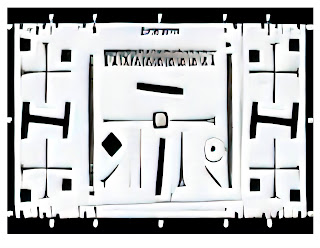Rory Gillen | Uncalibrated Space
Tuggeranong Arts Centre | Until 16 December 2021
Rory Gillen is a Canberra-based audio-visual and new media artist and educator. He has worked extensively in documentary and event photography, as well as maintaining an arts practice exploring the cutting edge of post-digital and networked photographic art. Working across photography, audio, video, and electronics, Gillen creates multisensory installations that critically engage.
Graduating from the ANU School of Art and Design in 2019 with first class honours, Gillen has exhibited in various galleries, including Canberra Contemporary Art Space, Brunswick Street Gallery (Victoria), and the Perth Institute for Contemporary Art.
Gillen is sometimes referred to as the resident tech nerd at Photoaccess where he currently works developing post digital programming and workspaces as well as tutoring and facilitating visiting artists in their practice and technical skills.
Many scholars consider us to be in the era of ‘Post Digital’. What does this mean for photography; its analogue form in some ways already consigned to the dustbin of history by theorists who insist that we live in a post-media era?
In a recently streamed conversation with another multidisciplinary artist Gillen dived deep into the changing face of photographic practice. He suggested, correctly, that whilst digital photography is essentially about capturing data, post digital is about investigating it and exploring concepts that silently exist in the data set. As someone who was amongst the first computer programmers in Australia and who watched the ones and zeros coming together as light dots on a bulky “pre-computer” whilst debugging my programs, I am fascinated now when people speak about manipulating ones and zeros - akin to manipulating negatives in darkrooms.
In his artistic practice, Gillen is fascinated by “the digital paradigm shift toward the fundamental machine readability of objects, exemplified by the digital image”. Here he explores the facets that deep learning carves into images and investigates “the underlying machinations of the algorithms themselves” posing the question “what is real, and how do we know”?
This
exhibition comprises twelve inkjet prints plus a mixed media installation showing
faces, illustrations, landscapes and objects – and much more. Aluminium,
plywood, a desktop computer, wires and miscellaneous electronics are all part
of the installation, without them there would be no screen images to see.
 |
3500 Steps From Illustrations, 2021 © Rory Gillen |
 |
3500 Steps From Objects, 2021 © Rory Gillen |
The prints relationships to faces, illustrations, landscapes and objects is not immediately obvious. At first glance I asked myself why one smaller print was of parked cars with a music stand amongst them. Closer inspection revealed that the stand was in fact supporting a copy of one of the larger prints. The same is true for other smaller prints of a landscape, Gillen’s own face, and an illustrative poster – stands in each of them support copies of larger prints in the exhibition. Four large prints titled 3500 Steps from Faces, etc. are curated grids of images resulting from heavy manipulation of ones and zeros.
 |
| Untitled Source Image IV, 2021 © Rory Gillen |
 |
| Untitled Source Image II, 2021 © Rory Gillen |
There is so much to look at, so much to wonder about. Images on the computer screen are mesmerising, flashing on and off at a rapid rate. Individual images on a larger LCD screen have a dreamlike quality. I saw cartoon-like faces, old hand made nails, overhead views of building site plans, hieroglyphics and lenses. Whatever you see you will enjoy.
 |
| Uncalibrated Space IV, 2021 © Rory Gillen |
 |
| Uncalibrated Space III, 2021 © Rory Gillen |
Grant Scott,
the founder/curator of United Nations of Photography, has written “The role of the 21st century photographer has changed and
is constantly evolving. It is, therefore, the responsibility of the engaged
photographer to understand that reality and to respond to those changes.”
Gillen is so engaged. We can expect the future to bring us many more
manipulated and appropriated artworks from him and others.
This review was published in the Canberra Times on 27/11/21 here. It is also on the author's own blog here.
